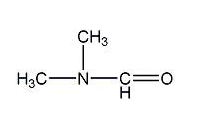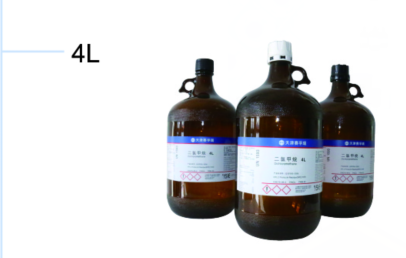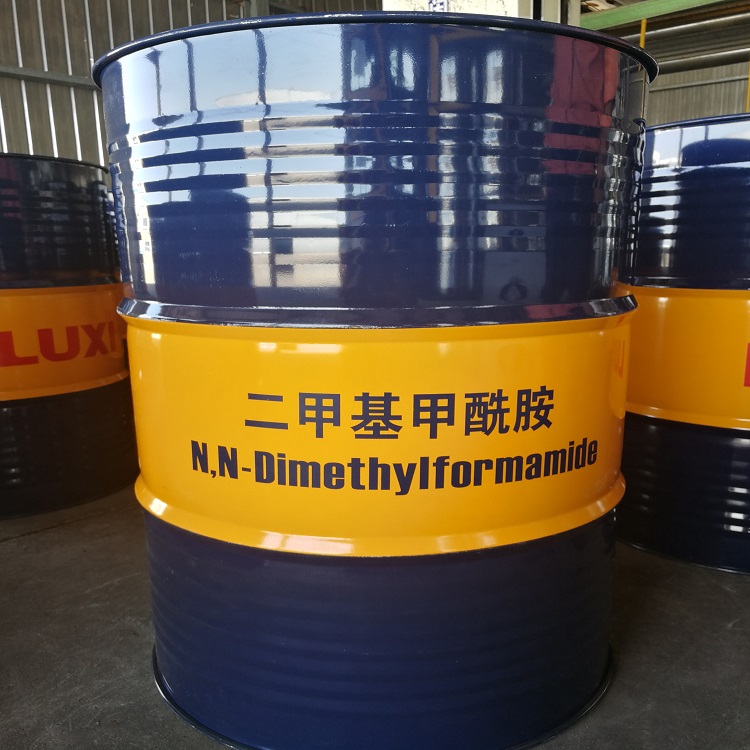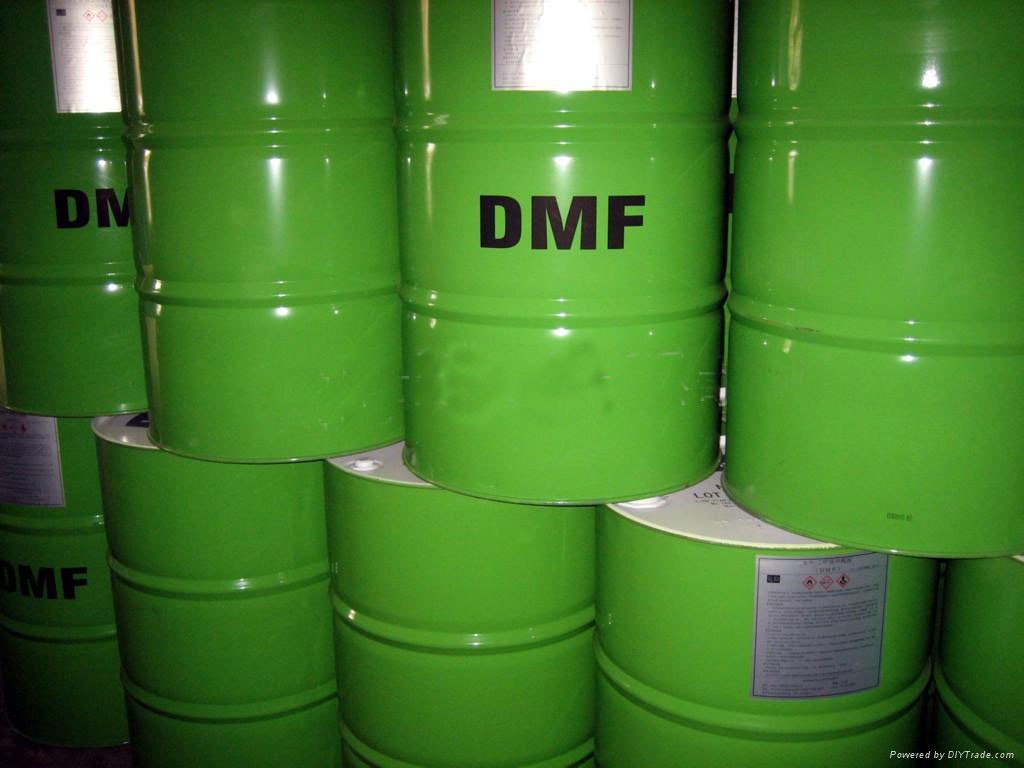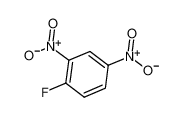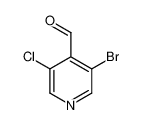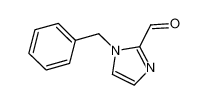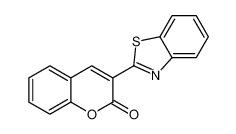| Product name | N,N-dimethylformamide |
|---|
| Product number | - |
|---|---|
| Other names | N,N-dimethyl-malonamic acid ethyl ester |
| Identified uses | For industry use only. Dimethylformamide is primarily used as an industrial solvent. Dimethylformamide solutions are used to process polymer fibers, films, and surface coatings; to permit easy spinning of acrylic fibers; to produce wire enamels, and as a crystallization medium in the pharmaceutical industry. |
|---|---|
| Uses advised against | no data available |
| Company | MOLBASE (Shanghai) Biotechnology Co., Ltd. |
|---|---|
| Address | Floor 4 & 5, Building 12, No. 1001 North Qinzhou Road, Xuhui District, Shanghai, China |
| Telephone | +86(21)64956998 |
| Fax | +86(21)54365166 |
| Emergency phone number | +86-400-6021-666 |
|---|---|
| Service hours | Monday to Friday, 9am-5pm (Standard time zone: UTC/GMT +8 hours). |
Acute toxicity - Dermal, Category 4
Eye irritation, Category 2
Acute toxicity - Inhalation, Category 4
Reproductive toxicity, Category 1B
2.2 GHS label elements, including precautionary statements| Pictogram(s) |   |
|---|---|
| Signal word | Danger |
| Hazard statement(s) | H312 Harmful in contact with skin H319 Causes serious eye irritation H332 Harmful if inhaled |
| Precautionary statement(s) | |
| Prevention | P280 Wear protective gloves/protective clothing/eye protection/face protection. P264 Wash ... thoroughly after handling. P261 Avoid breathing dust/fume/gas/mist/vapours/spray. P271 Use only outdoors or in a well-ventilated area. P201 Obtain special instructions before use. P202 Do not handle until all safety precautions have been read and understood. |
| Response | P302+P352 IF ON SKIN: Wash with plenty of water/... P312 Call a POISON CENTER/doctor/…if you feel unwell. P321 Specific treatment (see ... on this label). P362+P364 Take off contaminated clothing and wash it before reuse. P305+P351+P338 IF IN EYES: Rinse cautiously with water for several minutes. Remove contact lenses, if present and easy to do. Continue rinsing. P337+P313 If eye irritation persists: Get medical advice/attention. P304+P340 IF INHALED: Remove person to fresh air and keep comfortable for breathing. P308+P313 IF exposed or concerned: Get medical advice/ attention. |
| Storage | P405 Store locked up. |
| Disposal | P501 Dispose of contents/container to ... |
none
3.Composition/information on ingredients 3.1 Substances| Chemical name | Common names and synonyms | CAS number | EC number | Concentration |
|---|---|---|---|---|
| N,N-dimethylformamide | N,N-dimethylformamide | 68-12-2 | none | 100% |
Consult a physician. Show this safety data sheet to the doctor in attendance.
If inhaledFresh air, rest. Refer for medical attention.
In case of skin contactRemove contaminated clothes. Rinse and then wash skin with water and soap. Refer for medical attention .
In case of eye contactFirst rinse with plenty of water for several minutes (remove contact lenses if easily possible), then refer for medical attention.
If swallowedRinse mouth. Do NOT induce vomiting. Refer for medical attention .
4.2 Most important symptoms/effects, acute and delayedIrritation of eyes, skin and nose. May cause nausea. (USCG, 1999)
4.3 Indication of immediate medical attention and special treatment needed, if necessaryImmediate first aid: Ensure that adequate decontamination has been carried out. If patient is not breathing, start artificial respiration, preferably with a demand-valve resuscitator, bag-valve-mask device, or pocket mask, as trained. Perform CPR as necessary. Immediately flush contaminated eyes with gently flowing water. Do not induce vomiting. If vomiting occurs, lean patient forward or place on left side (head-down position, if possible) to maintain an open airway and prevent aspiration. Keep patient quiet and maintain normal body temperature. Obtain medical attention. /Organic acids and related compounds/
5.Fire-fighting measures 5.1 Extinguishing media Suitable extinguishing mediaWear self contained breathing apparatus for fire fighting if necessary.
5.2 Specific hazards arising from the chemicalSpecial Hazards of Combustion Products: Vapors are irritating (USCG, 1999)
5.3 Special protective actions for fire-fightersWear self-contained breathing apparatus for firefighting if necessary.
6.Accidental release measures 6.1 Personal precautions, protective equipment and emergency proceduresUse personal protective equipment. Avoid dust formation. Avoid breathing vapours, mist or gas. Ensure adequate ventilation. Evacuate personnel to safe areas. Avoid breathing dust. For personal protection see section 8.
6.2 Environmental precautionsPersonal protection: complete protective clothing including self-contained breathing apparatus. Ventilation. Remove all ignition sources. Collect leaking and spilled liquid in sealable containers as far as possible. Absorb remaining liquid in sand or inert absorbent. Then store and dispose of according to local regulations.
6.3 Methods and materials for containment and cleaning upUse personal protective equipment. Avoid breathing vapors, mist or gas. Ensure adequate ventilation. Remove all sources of ignition. Evacuate personnel to safe areas. Beware of vapors accumulating to form explosive concentrations. Vapors can accumulate in low areas.
7.Handling and storage 7.1 Precautions for safe handlingAvoid contact with skin and eyes. Avoid formation of dust and aerosols. Avoid exposure - obtain special instructions before use.Provide appropriate exhaust ventilation at places where dust is formed. For precautions see section 2.2.
7.2 Conditions for safe storage, including any incompatibilitiesSeparated from incompatible materials. See Chemical Dangers.Keep container tightly closed in a dry and well-ventilated place. Containers which are opened must be carefully resealed and kept upright to prevent leakage. Handle and store under inert gas.
8.Exposure controls/personal protection 8.1 Control parameters Occupational Exposure limit valuesRecommended Exposure Limit: 10 Hour Time-Weighted Average: 10 ppm (30 mg/cu m), skin.
Biological limit valuesno data available
8.2 Appropriate engineering controlsHandle in accordance with good industrial hygiene and safety practice. Wash hands before breaks and at the end of workday.
8.3 Individual protection measures, such as personal protective equipment (PPE) Eye/face protectionSafety glasses with side-shields conforming to EN166. Use equipment for eye protection tested and approved under appropriate government standards such as NIOSH (US) or EN 166(EU).
Skin protectionWear impervious clothing. The type of protective equipment must be selected according to the concentration and amount of the dangerous substance at the specific workplace. Handle with gloves. Gloves must be inspected prior to use. Use proper glove removal technique(without touching glove's outer surface) to avoid skin contact with this product. Dispose of contaminated gloves after use in accordance with applicable laws and good laboratory practices. Wash and dry hands. The selected protective gloves have to satisfy the specifications of EU Directive 89/686/EEC and the standard EN 374 derived from it.
Respiratory protectionWear dust mask when handling large quantities.
Thermal hazardsno data available
9.Physical and chemical properties| Physical state | Clear colorless liquid |
|---|---|
| Colour | Colorless to very slightly yellow liquid |
| Odour | Fishy odor |
| Melting point/ freezing point | -61°C(lit.) |
| Boiling point or initial boiling point and boiling range | 153°C(lit.) |
| Flammability | Class II Combustible Liquid: Fl.P. at or above 37.78°C and below 60°C.Flammable. Gives off irritating or toxic fumes (or gases) in a fire. |
| Lower and upper explosion limit / flammability limit | Lower flammable limit: 2.2% by volume at 212 deg F (100°C); Upper flammable limit: 15.2% by volume |
| Flash point | 58°C |
| Auto-ignition temperature | 445°C |
| Decomposition temperature | no data available |
| pH | pH = 6.7 (0.5 molar solution in water) |
| Kinematic viscosity | 0.802 cP at 25°C |
| Solubility | In water:soluble |
| Partition coefficient n-octanol/water (log value) | no data available |
| Vapour pressure | 2.7 mm Hg ( 20 °C) |
| Density and/or relative density | 0.944g/mL(lit.) |
| Relative vapour density | 2.5 (vs air) |
| Particle characteristics | no data available |
no data available
10.2 Chemical stabilityDMF is stable. It is hygroscopic and easily absorbs water form a humid atmosphere and should therefore be kept under dry nitrogen. High purity DMF, required for acrylic fibers, is best stored in aluminum tanks. DMF dose not change under light or oxygen and does not polymerize spontaneously. Temperatures >350°C may cause decomposition to form dimethylamine and carbon dioxide, with pressure developing in closed containers.
10.3 Possibility of hazardous reactionsCombustibleN,N-DIMETHYLFORMAMIDE may react violently with a broad range of chemicals, e.g.: alkaline metals (sodium, potassium), azides, hydrides (sodium borohydride, lithium aluminum hydride), bromine, chlorine, carbon tetrachloride, hexachlorocyclohexane, phosphorus pentaoxide, triethylaluminum, magnesium nitrate, organic nitrates. Forms explosive mixtures with lithium azide [Bretherick, 5th ed., 1995, p. 453]. Oxidation by chromium trioxide or potassium permanganate may lead to explosion [Pal B. C. et al., Chem. Eng. News, 1981, 59, p. 47].
10.4 Conditions to avoidno data available
10.5 Incompatible materialsCAN REACT VIGOROUSLY WITH OXIDIZING AGENTS, HALOGENATED HYDROCARBONS, & INORG NITRATES.
10.6 Hazardous decomposition productsWhen heated to decomposition it emits toxic fumes of /nitrogen oxides/.
11.Toxicological information Acute toxicity- Oral: LD50 Mouse oral 6.8 mL/kg
- Inhalation: LC50 Mouse inhalation 9400 mg/cu m/2 hr
- Dermal: no data available
no data available
Serious eye damage/irritationno data available
Respiratory or skin sensitizationno data available
Germ cell mutagenicityno data available
CarcinogenicityEvaluation: There is inadequate evidence in humans for the carcinogenicity of dimethylformamide. There is evidence suggesting the lack of carcinogenicity of dimethylformamide in experimental animals. Overall evaluation: Dimethylformamide is not classifiable as to its carcinogenicity in humans (Group 3).
Reproductive toxicityOnly one study is available on the reproductive effects of dimethylformamide in humans. This study reported an increased rate of spontaneous abortion among pregnant women occupationally exposed to dimethylformamide. However, these results cannot be attributed solely to dimethylformamide, as these women were exposed to a number of additional chemicals. Dimethylformamide is embryotoxic in animals; reduced implantation efficiency, decreased mean fetal weight, and increased abortions have been reported in rats exposed by inhalation. In rabbits exposed to dimethylformamide by gavage (experimentally placing the chemical in the stomach), decreased mean fetal weight and increased percentage of malformed live fetuses per litter and increased percentage of litters with malformed fetuses were observed in the high-dose group.
STOT-single exposureno data available
STOT-repeated exposureno data available
Aspiration hazardno data available
12.Ecological information 12.1 Toxicity- Toxicity to fish: LC50; Species: /Oncorhynchus mykiss/ (rainbow trout) weight 0.8 g; Conditions: static bioassay; Concentration: 12,000 mg/L for 96 hr (95% confidence limits 10,000-13,000 mg/L)
- Toxicity to daphnia and other aquatic invertebrates: EC50; Species: Daphnia magna (Water flea) age <24 hr; Conditions: freshwater, static, 20.5°C, pH 7.04-7.97, hardness 46.4 (40.4-56.3) mg/L CaCO3, alkalinity 41.7 (30.0-46.0) mg/L CaCO3, dissolved oxygen 85.5 (77.5-90.8) mg/L; Concentration: 26300000 ug/L for 24 hr (95% confidence interval: 23400000-29600000 ug/L); Effect: intoxication, immobilization
- Toxicity to algae: EC50; Species: Anabaena inaequalis (Blue-Green Algae) 1X10+6 cells/mL; Conditions: freshwater, static; Concentration: 0.6% for 10-14 days (95% confidence interval: 0.36-0.84%); Effect: growth, general /formulation
- Toxicity to microorganisms: no data available
AEROBIC: Aerobic unacclimated and acclimated river die-away tests showed that N,N-dimethylformamide at an initial concentration of 30 mg/L completely disappeared within 6 and 3 days, respectively(1). However, 24 to 48 hours was required before any degradation was observed among unacclimated samples(1). N,N-Dimethylformamide, present at 100 mg/L, reached 4.4% of its theoretical BOD in 2 weeks using an activated sludge inoculum at 30 mg/L in the Japanese MITI test(2). Aerobic grab sample data for N,N-dimethylformamide in sea water showed a mineralization rate of <3% in 24 hours for initial concentration of 10 ug/L and 100 ug/L(3). However, 20% of N,N-dimethylformamide at a concentration of 0.1 ug/L was mineralized in 24 hrs(3). All samples were adjusted to sterilized controls(3). Aqueous screening test data demonstrated that dimethylformamide was easily removed by sewage treatment facilities upon acclimation(4). Wastewater from a polyimide synthesis operation at Kansas City, MO contained N,N-dimethylformamide at a concentration of 65,500 mg/L before entering a bench scale biological treatment system(5). At feed rates of 90 lb/day/1000 cu ft, effluent from the biological reactor contained N,N-dimethylformamide at a concentration of <10 mg/L(5). The concentration of N,N-dimethylformamide in the reactor sludge was not documented(5).
12.3 Bioaccumulative potentialBCFs of 0.3-1.2 and 0.3-0.8 were reported in carp (Cyprinus carpio) when exposed to 2 and 20 ppm of N,N-dimethylformamide over a 2-week period, respectively(1). According to a classification scheme(2), these BCFs suggest the potential for bioconcentration in aquatic organisms is low(SRC).
12.4 Mobility in soilUsing a structure estimation method based on molecular connectivity indices(1), the Koc of N,N-dimethylformamide can be estimated to be 1(SRC). According to a classification scheme(2), this estimated Koc value suggests that N,N-dimethylformamide is expected to have very high mobility in soil.
12.5 Other adverse effectsno data available
13.Disposal considerations 13.1 Disposal methods ProductThe material can be disposed of by removal to a licensed chemical destruction plant or by controlled incineration with flue gas scrubbing. Do not contaminate water, foodstuffs, feed or seed by storage or disposal. Do not discharge to sewer systems.
Contaminated packagingContainers can be triply rinsed (or equivalent) and offered for recycling or reconditioning. Alternatively, the packaging can be punctured to make it unusable for other purposes and then be disposed of in a sanitary landfill. Controlled incineration with flue gas scrubbing is possible for combustible packaging materials.
14.Transport information 14.1 UN Number| ADR/RID: UN2265 | IMDG: UN2265 | IATA: UN2265 |
| ADR/RID: N,N-DIMETHYLFORMAMIDE |
| IMDG: N,N-DIMETHYLFORMAMIDE |
| IATA: N,N-DIMETHYLFORMAMIDE |
| ADR/RID: 3 | IMDG: 3 | IATA: 3 |
| ADR/RID: III | IMDG: III | IATA: III |
| ADR/RID: no | IMDG: no | IATA: no |
no data available
14.7 Transport in bulk according to Annex II of MARPOL 73/78 and the IBC Codeno data available
15.Regulatory information 15.1 Safety, health and environmental regulations specific for the product in question| Chemical name | Common names and synonyms | CAS number | EC number |
|---|---|---|---|
| N,N-dimethylformamide | N,N-dimethylformamide | 68-12-2 | none |
| European Inventory of Existing Commercial Chemical Substances (EINECS) | Listed. | ||
| EC Inventory | Listed. | ||
| United States Toxic Substances Control Act (TSCA) Inventory | Listed. | ||
| China Catalog of Hazardous chemicals 2015 | Listed. | ||
| New Zealand Inventory of Chemicals (NZIoC) | Listed. | ||
| Philippines Inventory of Chemicals and Chemical Substances (PICCS) | Listed. | ||
| Vietnam National Chemical Inventory | Listed. | ||
| Chinese Chemical Inventory of Existing Chemical Substances (China IECSC) | Listed. | ||
| Creation Date | Aug 12, 2017 |
|---|---|
| Revision Date | Aug 12, 2017 |
- CAS: Chemical Abstracts Service
- ADR: European Agreement concerning the International Carriage of Dangerous Goods by Road
- RID: Regulation concerning the International Carriage of Dangerous Goods by Rail
- IMDG: International Maritime Dangerous Goods
- IATA: International Air Transportation Association
- TWA: Time Weighted Average
- STEL: Short term exposure limit
- LC50: Lethal Concentration 50%
- LD50: Lethal Dose 50%
- EC50: Effective Concentration 50%
- IPCS - The International Chemical Safety Cards (ICSC), website: http://www.ilo.org/dyn/icsc/showcard.home
- HSDB - Hazardous Substances Data Bank, website: https://toxnet.nlm.nih.gov/newtoxnet/hsdb.htm
- IARC - International Agency for Research on Cancer, website: http://www.iarc.fr/
- eChemPortal - The Global Portal to Information on Chemical Substances by OECD, website: http://www.echemportal.org/echemportal/index?pageID=0&request_locale=en
- CAMEO Chemicals, website: http://cameochemicals.noaa.gov/search/simple
- ChemIDplus, website: http://chem.sis.nlm.nih.gov/chemidplus/chemidlite.jsp
- ERG - Emergency Response Guidebook by U.S. Department of Transportation, website: http://www.phmsa.dot.gov/hazmat/library/erg
- Germany GESTIS-database on hazard substance, website: http://www.dguv.de/ifa/gestis/gestis-stoffdatenbank/index-2.jsp
- ECHA - European Chemicals Agency, website: https://echa.europa.eu/







